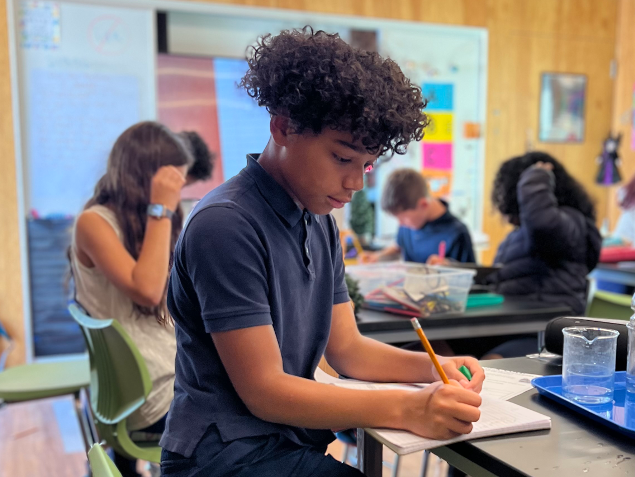“In my other opinion, I don’t think so, because the earth goes through natural cycles. Even though I think people have really made a difference [in average temperature], I also think it can go up and down and make a recovery. But I don’t know for sure.”
6th grade scientists were fervent speakers this week discussing their new unit on climate. “Okay, but just 1-5 degrees can make a big change, like melting glaciers. And, if it keeps going up a few degrees every year then after, like, 40 years it could be a lot of degrees.” They defined terms like anomaly, greenhouse gas, carbon footprint, and saw some examples that extend what they already know (e.g. that driving a gas-fueled car contributes more greenhouse emissions than biking) to include more phases in the life cycle of a product; material extraction, processing/refining, manufacturing, and then packaging and transportation can all precede a single item’s trip to our nearby store (one student said, “wait, is that why farmer’s markets are good?”).
Okay, but just 1-5 degrees can make a big change, like melting glaciers. And, if it keeps going up a few degrees every year then after, like, 40 years it could be a lot of degrees.
These phases of a product are ones we don’t usually see but they’re part of calculating that item’s carbon footprint. Students practiced reading and interpreting line graphs, recognizing what they already know (units, axes, labels) and proposing titles for unlabeled graphs to show their understanding. And they discussed and debated how important climate change is and what humans should prioritize around addressing it, often referencing their participation in the Model United Nations lunch club, where many of them are also considering climate through a lens of government. Their teacher reminded them that their yearning to debate in this way is science—to look at and interpret data, listen to others’ ideas, make claims with evidence, and then also be ready to change our minds as we learn more.

